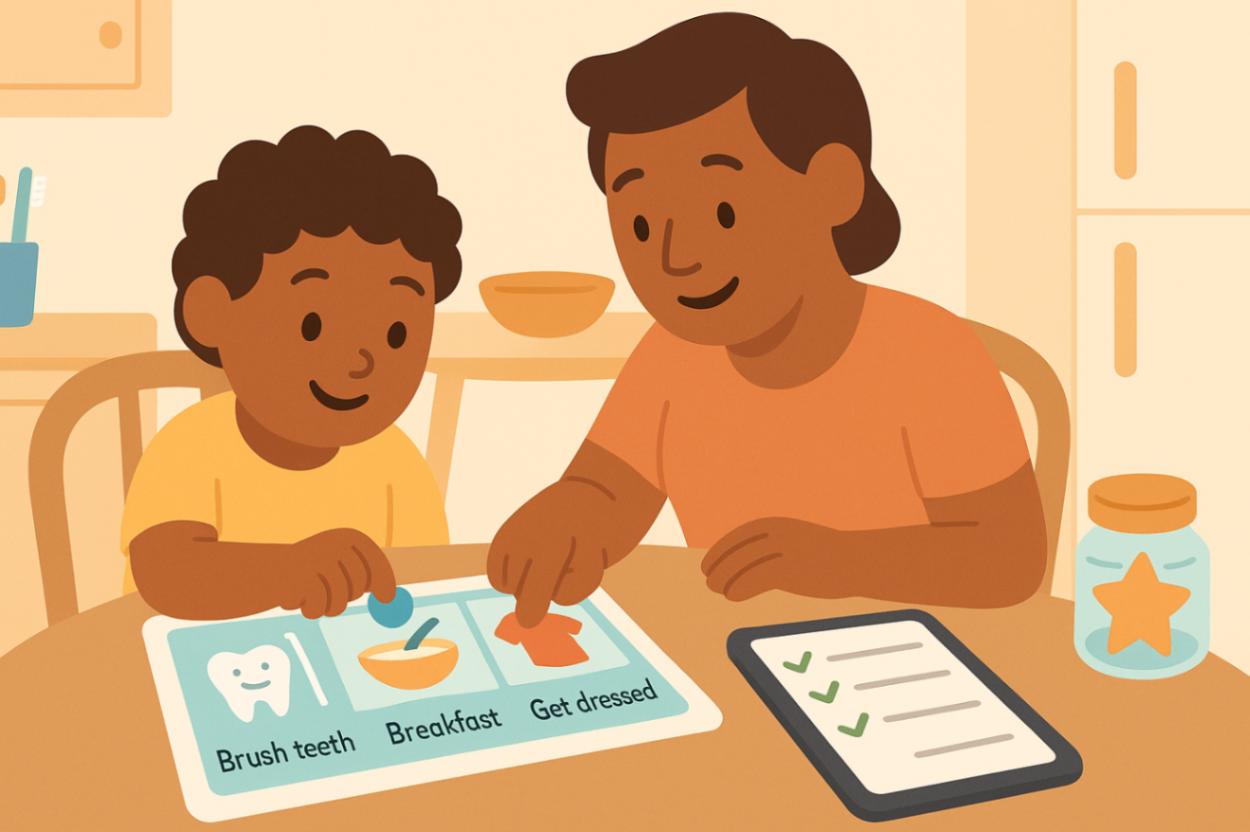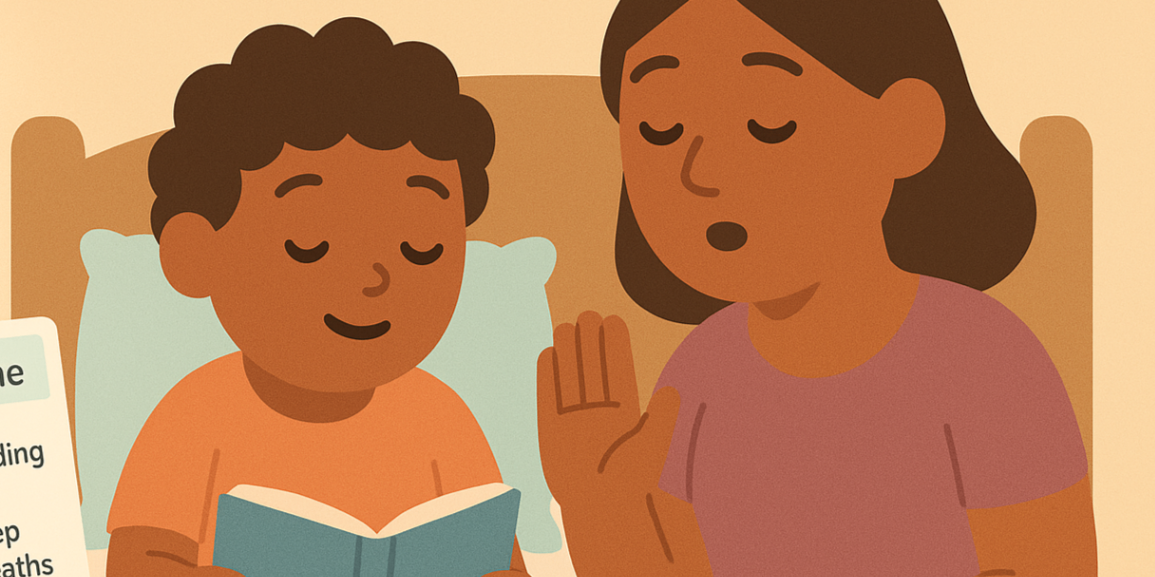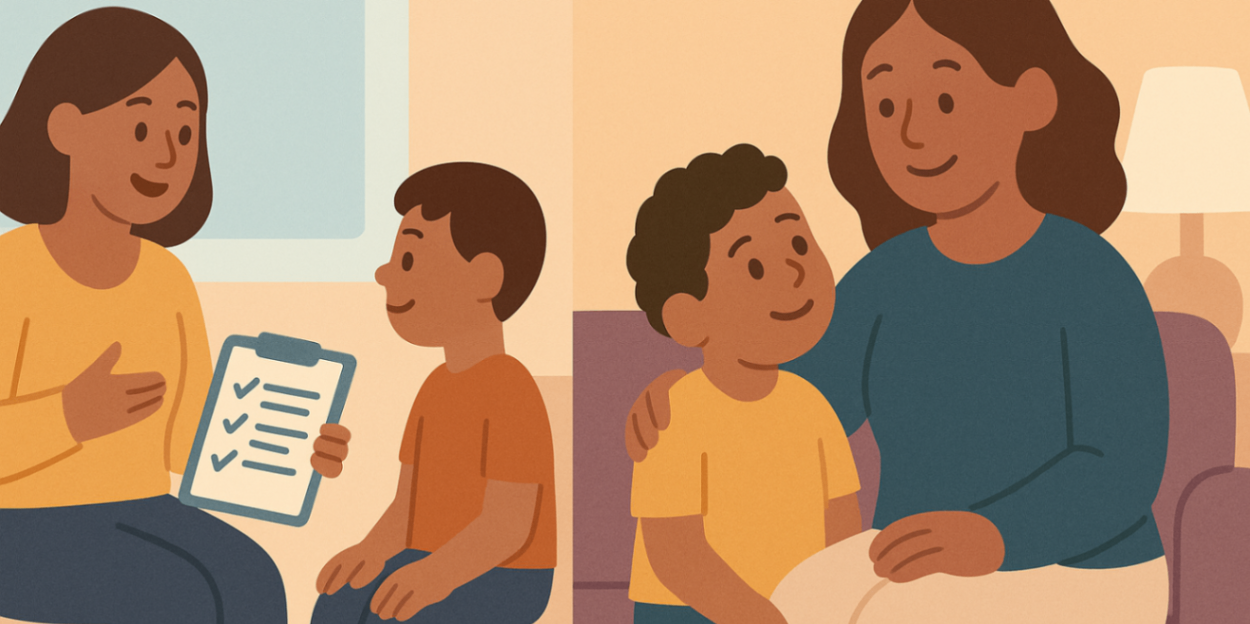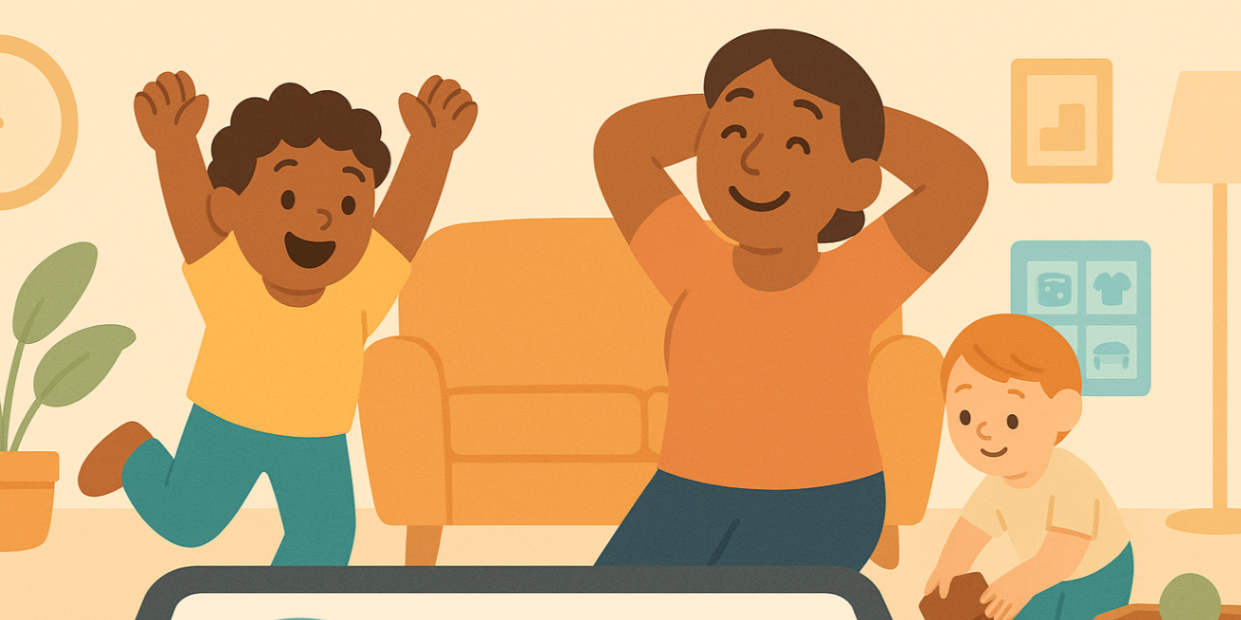
effective home routines to enhance behaviour therapy gains
18 August, 2025
Introduction
Creating a structured home helps people do better in behaviour therapy. Having steady routines each day supports the skills learned in sessions. It also makes it easier to learn new ways to act. A set routine gives a safe place to practice things like cognitive restructuring and social learning theory. This kind of support helps people keep and use their new skills, which is good for mental health. When a family matches what happens at home to what therapy aims to do, people have better interpersonal relationships and see good changes last.
Key Highlights
-
Consistent home routines help connect what you learn in behavioural therapy with your daily life. The,these routines help support long-term changes when it comes to mental health conditions.
-
Structured routines, such as morning, mealtime, and bedtime activities, help practice the new skills you get in cognitive behavioural therapy and behavioural therapy.
-
Simple reinforcement systems at home use operant conditioning to encourage positive behavioural patterns. They help with progress in treatment. Tracking how people do with easy data methods lets families know what improvements have come and what needs to be fixed.
-
If you want to find a qualified behavioural therapist, start by looking for professionals who work with operant conditioning. A good therapist should have things like board certification in behaviour analysis, a related graduate degree, and training under supervision. Recommendations from trusted healthcare providers or local help organisations can also lead you to respected names.
-
Tracking progress with data that is simple to read can help families keep an eye on improvements and fix problems fast.
-
Working together with mental health professionals helps make home routines that fit your needs and treatment plans. The,such teamwork makes day-to-day life feel better and lifts the quality of life.
Why consistent home routines matter for behaviour change

Routine is important in shaping how people act and feel. It also helps make behavior therapy work better. The use of a set routine brings order and makes each day feel more certain, which is important when people learn new skills or practice good behaviour. When routines are in place, it is easier for those with mental health or substance use problems to get through the day. A set way of doing things can make things feel more normal and safe for them.
Good routines also help people get along better in their interpersonal relationships at home. Family can join in and practice ways to help someone stick to better behaviours. A routine that everyone follows makes a big difference. Sticking to the same routine every day helps people feel safe and supports both behavioural patterns and treatment plans. In this way, routines can help make behaviour therapy more helpful for everyone involved.
If you’re researching local options, read Best Behavioural Therapy for Kids Near You for a clear guide on what to look for.
How Behaviour Therapy Works
Behaviour therapy is based on basic principles of learning. It tries to change maladaptive behaviours using clear steps. It uses methods like operant conditioning to help people learn the right behaviours while reducing unwanted ones. This helps people build skills and address problematic core beliefs. Mental health professionals use techniques such as cognitive restructuring and exposure therapy to treat cognitive distortions and anxiety disorders. They check often to make sure treatment plans match how the individual is doing now. This helps everyone understand the basics of behavioural patterns better.
With mental health professionals’ help and strategies made for each person, these types of therapy—an umbrella term covering several methods—can help people get better at handling emotions and working with others. This leads to better mental health. The type of therapy chosen matters and can change how well these interventions work.
Creating goals that link clinic targets to daily life

Setting clear goals for behaviour therapy is important. It helps link what you learn in sessions with what you do every day. Families can use these new skills in their daily routines. This makes it easier to reduce the chance of any bad or unwanted behaviours. When the goals feel helpful in real life, they help people get along better and use what they know in different settings. Using ways like cognitive restructuring and behavioural approaches can change the goals to fit what each person needs. This makes the therapy work well for both the people and their home life.
Daily structure: morning, mealtime, bedtime routines that teach skills
Setting up a daily plan with set times for morning, meals, and bedtime helps people learn new good habits. Having the same routine each day gives the mind a chance to practice new things. Doing the same things over and over helps form skills with the help of operant conditioning. For example, when you keep a routine for meals, you give a chance to practice talking to others and learn from social learning. At bedtime, a routine helps with handling feelings and dealing with stress in a better way. When someone keeps up with these activities, it supports what is taught in cognitive behavioural therapy and behavioural therapy. A solid daily schedule can make people feel more close to each other, building stronger interpersonal relationships and helping everyone feel more supported as they try to grow and develop.
Short practice sessions: frequency, duration and fidelity tips
Short practice sessions help you keep the skills you learn in therapy strong. Doing practice often, with each session lasting about 5 to 15 minutes, helps you remember what you learned and gives you a way to change how you think. It's important to stay true to the way your therapist taught you. In each practice, you should use the same methods, like exposure therapy or operant conditioning, for best results.
Try to practice every day or as often as you can. This makes it easier to use new skills in your life and helps make good behavioural patterns stick. When you practice in this focused way, the link between what you do in therapy and how you feel in daily life gets stronger. These short practice sessions are a good way to support better mental health, work on cognitive restructuring, and keep building strong skills.
Other Effective Approaches
Using different ways and methods can help make behavioural therapy work better for people of all ages. Techniques like cognitive behavioural therapy and cognitive behavioural play therapy can help with the problems that start inside our minds. This is big for people dealing with behavioural issues and many medical conditions, including mental illness, severe mental illness, and personality disorders. Exposure therapy can help people feel less stress around their anxiety disorders by slowly helping them face and get used to what makes them feel afraid.
Taking ideas from dialectical behaviour therapy also can make it easier for people to be good when working with others and handle their feelings better, enhancing their interpersonal effectiveness. If you use social learning theory, people can learn new skills by watching and looking at how others do things. This makes their journey through behavioural therapy richer and helps them do better with the challenges life gives them.
The Importance of Consistency Between Behaviour Therapy and Home
 Getting behaviour therapy and home routines to be the same is important. It helps the person practice and keep up new skills learned in therapy. This makes good behavioural patterns stick and supports better mental health. The link between therapy techniques like operant conditioning and what people do every day helps things work well. By keeping home and therapy in sync, families help people use the new thinking and actions in real-life situations. This way, they feel better, their quality of life goes up, and they become stronger against psychological problems.
Getting behaviour therapy and home routines to be the same is important. It helps the person practice and keep up new skills learned in therapy. This makes good behavioural patterns stick and supports better mental health. The link between therapy techniques like operant conditioning and what people do every day helps things work well. By keeping home and therapy in sync, families help people use the new thinking and actions in real-life situations. This way, they feel better, their quality of life goes up, and they become stronger against psychological problems.
Why Home Routines Matter for Progress
Routines at home help to make life feel more regular. This is good for keeping up with the ideas in behaviour therapy. When there is the same plan every day, it makes things feel clear and steady. The regular flow lets people practice new skills in a setting they know well. This way, what they learn at therapy can move into their real life. Keeping routines makes it easier for the person to manage their feelings and be better in their relationships with others. A steady environment is important for mental health and keeps people focused on doing better. Over time, this can help with different life problems and guide them to real progress.
Bridging the Gap Between Clinical Sessions and Everyday Life
Bringing therapeutic strategies into daily life is very important for real and lasting change. When people use what they learn in therapy often, they get stronger with new habits. This helps them fight old patterns that do not be useful and feel more at ease with others. Simple actions, like mindful talking or doing exposure therapy, can help connect the advice from mental health sessions to things that happen outside the clinic. Working together with mental health professionals helps families pick ideas that fit their life. This makes it more likely that what they gain in therapy shows up at home and everyone feel better. A good connection between practices and real life can lift emotional health and improve the quality of life for all.
Reinforcement systems at home: simple, effective approaches
 Using reinforcement systems at home can make behaviour therapy much more helpful. Easy steps like token economies or using a reward chart help the family practice new skills and form better habits. When you use ideas from operant conditioning, these systems push people to try to practice good behaviours again and again. Getting the whole family involved in these tools helps build better interpersonal relationships, and supports working with mental health professionals. So, this can make managing psychological problems easier, while helping your home feel friendly, fun, and be a nice place to grow and learn together.
Using reinforcement systems at home can make behaviour therapy much more helpful. Easy steps like token economies or using a reward chart help the family practice new skills and form better habits. When you use ideas from operant conditioning, these systems push people to try to practice good behaviours again and again. Getting the whole family involved in these tools helps build better interpersonal relationships, and supports working with mental health professionals. So, this can make managing psychological problems easier, while helping your home feel friendly, fun, and be a nice place to grow and learn together.
Collaborating with Your Therapist
Open communication with your therapist is very important in behaviour therapy. When you talk about your daily routines, changes in how you act, and emotions, your therapist can adjust treatment plans to fit what you need. Working together in this way builds a strong partnership. It also helps you feel more involved in what happens during therapy. Regular check-ins make it easier to use what you learn in therapy in your day-to-day life. This helps you be more consistent and supports good behavioural patterns. When you and your therapist do these things, behaviour therapy becomes more helpful and meaningful for everyone.
Personalising Routines to Individual Needs
Customising routines at home helps make behaviour therapy work better. Every person is different. The way someone learns or feels can really change how things go. When families add the things people like into their daily plans, it helps everyone feel more motivated and interested. This makes therapy feel good and helps people want to take part.
Making practice feel personal helps with unique behavioural patterns and supports mental health. A friendly and open space lets everyone learn new skills easier. When people feel heard and their needs are noticed, practice at home becomes a team effort. A group with us working together helps keep progress strong and leads to better mental health for all.
Tracking progress at home: simple data methods for families
Establishing predictable schedules helps you track how behaviour changes at home. Using easy data collection methods like checklists or a daily journal makes it simple to notice behavioural patterns and see if there are changes over time. Visual aids, such as charts, can show how well interventions are working. This makes progress clear and keeps everyone motivated. When you build in some flexibility, families can adjust routines as needed to keep interventions working with what therapy needs and goals are. A steady feedback loop helps everyone feel better and supports the journey to real behaviour change, which also helps improve quality of life.
Establishing Predictable Schedules
Making sure there are set schedules can help a lot with behaviour therapy. When things stay the same, the person can guess what comes next. It helps to feel safe and keeps anxiety low. This kind of safety is important for mental health.
If you use operant conditioning, the schedule can support good actions. It can stop habits that are not helpful. Daily things like eating together and sticking to bedtime, show the person what to expect. Families can use this to help someone learn new skills. This keeps the good things learned in therapy going strong. It also helps everyone feel closer and helps their interpersonal relationships at home.
Building Flexibility into Daily Plans
Adding flexibility to daily plans can really help make behaviour therapy more effective. This way, people can change their routines when life does not go as planned. Things can change quickly, and it is good to be ready for that. When plans have some space for changes, people feel less stress and are less likely to feel overwhelmed. This is helpful, especially for those with anxiety disorders.
If you use ideas from cognitive behavioural therapy, you can come up with backup plans. These can help you keep moving forward, even when things do not go the way you want. The main thing is to find a good balance between having a plan and being able to change it. This helps you pick up new skills and feel better at the same time.
Making Therapy Gains Last: Troubleshooting Common Challenges
Therapeutic gains often face problems, but it helps to spot barriers early. This can make us more strong when working toward goals. With mental health, people may see issues like gaps in routine. It’s good to stay flexible without moving away from treatment plans. Being open and talking with mental health professionals and your family helps everyone know what therapy is about.
It’s useful to mix positive support systems into everyday life to boost motivation. When people try tools such as cognitive restructuring or systematic desensitisation, they get better at handling problems. These steps help them keep moving forward, feel good about progress, and improve their quality of life with help from mental health professionals and strong treatment plans.
Addressing Barriers and Setbacks
Identifying what gets in the way is important in behaviour therapy. These barriers may come from the environment or from relationships with other people. This can make it hard to follow new routines. Methods like cognitive restructuring and operant conditioning help you manage these problems. It may be a good idea to have regular appointments with mental health professionals, like social workers. These check-ins help treatment plans to stay flexible and fit to what you need.
When there are setbacks, it helps to talk openly with therapists and families. This kind of conversation can support breaking the cycle of maladaptive behaviours. It also helps people work through tough times and feel stronger, so therapy gives better results. Mental health, social workers, operant conditioning, and cognitive restructuring all play a role in helping you find new ways to move forward. Regular updates, open talk, and flexible treatment plans make it feel easier to stick with good habits.
Strategies for Motivation and Engagement
Building motivation in behavioural therapy starts with knowing what matters to each person. If strategies feel personal, people join in more. Using things like praise or rewards helps them see their progress. This makes them feel good and want to keep trying. Giving feedback often and working together on goals also helps build trust and keeps people involved. When you use visuals and track how things go, people can see their growth. This encourages them to stick with it. A full approach that mixes what someone likes with therapy goals helps everyone stay engaged in behavioural therapy over time.
Supporting Different Age Groups: Tips for Families
Making good routines that fit different ages can help behaviour therapy work better at home. For kids, using play and some planned activities can help keep them interested. It also helps them learn new skills. Teens often do better if you work with them to make routines together. This gives them some control over what they do each day. Adults may find it helpful to add things like mindfulness and relaxing moments to their day. It’s good to check routines often. This helps make sure they are still right for everyone as people change and grow. A plan that is made for each person helps support strong interpersonal relationships in the family. In the end, it helps with behavioural change, better mental health, and brings benefits to both individuals and their families.
Routines for Children and Teens
Setting up routines for children and teens is very important for how they feel and act. Having morning habits, regular meal times, and calming ways to end the day helps them feel safe. This feeling of safety is needed for things like behaviour therapy, including acceptance and commitment therapy that uses relational frame theory.
When you use ideas from cognitive behavioural therapy in these routines, the children can learn good ways to deal with their feelings and get better at talking to others. This helps them understand their emotions and build strong interpersonal relationships. Making these routines fit their own needs gets them involved and helps them practice better behaviour. In time, this leads to real change that lasts.
Adapting Routines for Adults
Creating routines for adults means you first have to understand each person's needs and the way life can get busy. Good behavioural therapy methods help people set up steady schedules that boost mental health and help them feel stronger inside. Adding small things like mindfulness practice or easy ways to lower stress is one way to help common mental health issues, such as anxiety disorders or mood swings. When you slowly introduce new skills, you help people move forward. This also makes their connections with others better, which supports a good balance in life. Keeping these routines flexible makes it easier to handle day-to-day problems and lets people keep the benefits they gain from therapy.
Conclusion
Keeping up the progress made with behaviour therapy depends a lot on regular home routines. When families set clear rules and use reward systems, they can make therapy even more helpful. Adding behavioural therapy steps into everyday life gives people the skills they need for lasting change. Working together with mental health professionals and mental health care experts helps make sure these routines fit what each person needs. In the end, having a home that is good for mental health can make life better and help people handle problems and do well in their interpersonal relationships.
If you’d like help turning these routines into a practical home program tailored to your child, our clinicians can help map clinic goals into simple daily steps and track progress with easy-to-use tools. To arrange a tailored review or discuss a home plan, book consultation now.
Frequently Asked Questions
Can home routines replace therapy sessions?
Home routines help with therapy. But they do not take the place of sessions with a therapist. These routines help people practice things from therapy. When you do them every day at home, the skills start to feel natural. You get to use them in real life. Even so, you still need help from a therapist. The therapist gives good advice and knows how to help you change your behaviour in the best way.
How do I adapt routines if my needs change over time?
To keep routines useful, look at your needs and what you like often. Talk with your family about these things. Change your schedule if you, or someone else, have new things that are important. Try to stay open and ready for change, but hold on to the most important activities. This way, your routines stay helpful and fit well with the goals of behaviour therapy.
Are there specific activities that can complement behaviour therapy in a home setting?
Yes, doing things like role-playing, planned playdates, and practice as part of a routine can help with behaviour therapy. The activities help people use what they learn during therapy in real life. They boost social skills and support the progress made in therapy. Using these in day-to-day life makes what you get from behaviour therapy work even better.
.svg)












